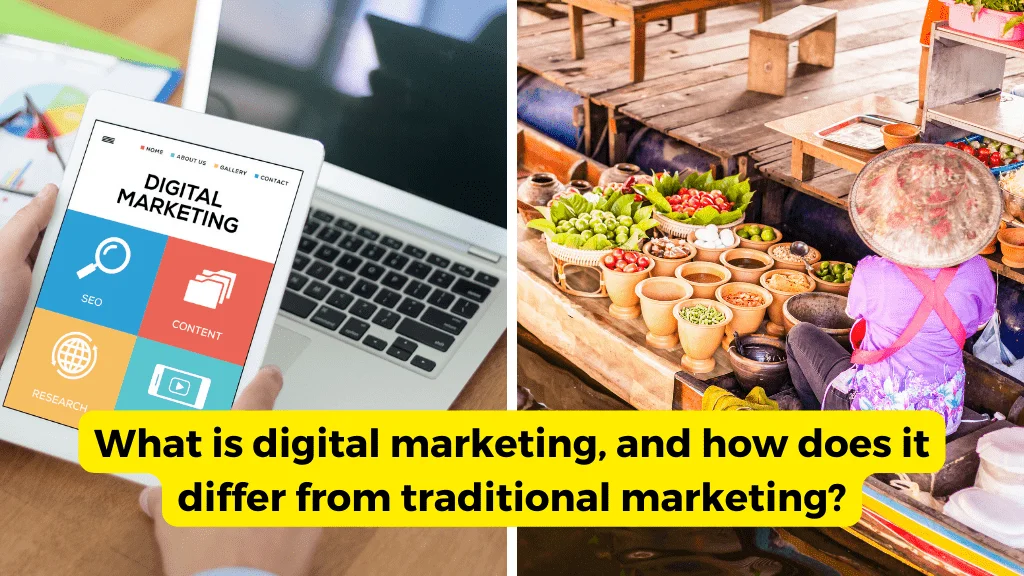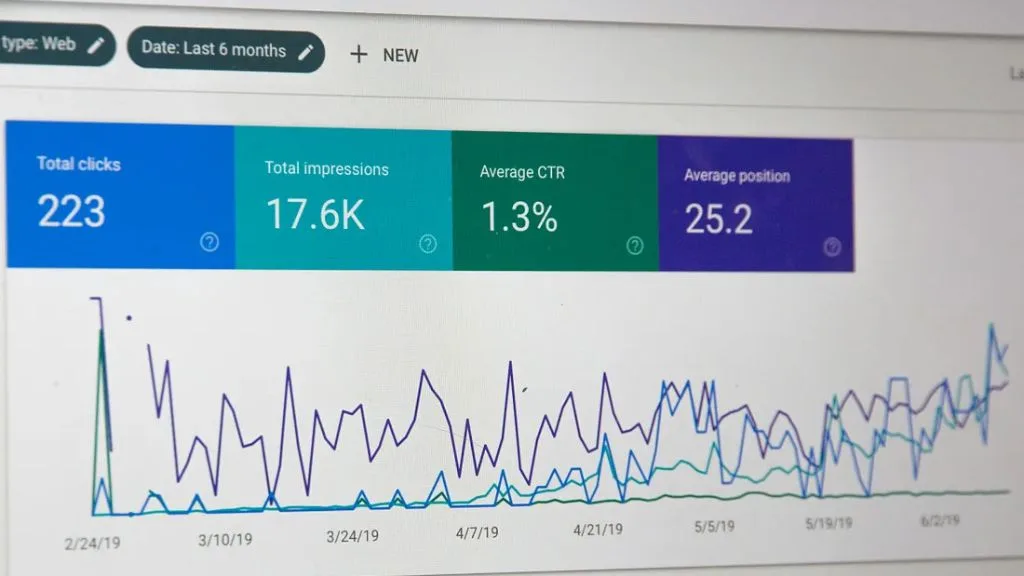Marketing has been an essential aspect of business for centuries. It is the process of promoting and selling products or services to potential customers. Traditionally, marketing has been carried out through various offline channels, such as billboards, newspapers, magazines, and television ads. However, with the rise of the internet and technological advancements, digital marketing has become increasingly popular in recent years.
What is digital marketing, and how does it differ from traditional marketing? In this article, we will explore the differences between digital marketing and traditional marketing, including their definitions, strategies, advantages, and disadvantages.
Contents
What is Digital Marketing?
Digital marketing refers to the process of promoting and selling products or services using digital channels, such as search engines, social media, email, and websites. Digital marketing allows businesses to reach a wider audience, engage with potential customers, and measure the effectiveness of their marketing campaigns.
Digital Marketing Strategies
Digital marketing encompasses a range of strategies and techniques, including:
- Search Engine Optimization (SEO): SEO is the practice of optimizing a website to rank higher in search engine results pages (SERPs). The goal is to improve the website’s visibility and drive more traffic to the site.
- Pay-per-click (PPC) Advertising: PPC advertising is a form of digital advertising where advertisers pay a fee each time a user clicks on one of their ads. The most common type of PPC advertising is Google Ads, where advertisers bid on keywords to display their ads in search engine results pages.
- Social Media Marketing: Social media marketing involves using social media platforms, such as Facebook, Twitter, Instagram, and LinkedIn, to promote products or services, engage with customers, and build brand awareness.
- Email Marketing: Email marketing involves sending promotional messages and newsletters to a list of subscribers. The goal is to build relationships with customers, promote products or services, and encourage repeat business.
- Content Marketing: Content marketing involves creating and sharing valuable content, such as blog posts, videos, and infographics, to attract and engage potential customers. The goal is to build trust and credibility with the audience and ultimately drive more sales.
Advantages of Digital Marketing
Digital marketing has several advantages over traditional marketing, including:
- Cost-Effective: Digital marketing is often more cost-effective than traditional marketing. For example, running a social media campaign or sending an email newsletter is significantly cheaper than placing an ad in a newspaper or on television.
- Targeted: Digital marketing allows businesses to target specific audiences based on demographics, interests, and behavior. This targeted approach can result in higher conversion rates and a better return on investment.
- Measurable: Digital marketing campaigns can be measured and analyzed using various tools, such as Google Analytics. This allows businesses to track the success of their campaigns and make data-driven decisions.
- Global Reach: Digital marketing allows businesses to reach a global audience, regardless of their location. This can be especially beneficial for businesses that offer digital products or services.
Disadvantages of Digital Marketing
Digital marketing also has some disadvantages, including:
- Limited Reach: While digital marketing can reach a global audience, it may not be effective in reaching older or less tech-savvy demographics.
- High Competition: Digital marketing is highly competitive, and businesses need to constantly innovate and adapt to stay ahead of their competitors.
- Technical Expertise Required: Digital marketing requires technical expertise and knowledge of various tools and platforms. This can be a barrier to entry for some businesses, particularly those that lack the resources or skills to implement digital marketing strategies effectively.
What is Traditional Marketing?
Traditional marketing refers to the use of offline channels to promote and sell products or services. These channels can include billboards, television ads, radio spots, print ads, and direct mail.
Traditional Marketing Strategies
Traditional marketing strategies can include:
- Print Advertising: This includes newspaper ads, magazine ads, and flyers.
- Broadcast Advertising: This includes television ads and radio spots.
- Outdoor Advertising: This includes billboards, posters, and banners.
- Direct Mail: This includes flyers, brochures, and catalogs that are sent directly to potential customers.
Advantages of Traditional Marketing
Traditional marketing also has its advantages, including:
- Wide Reach: Traditional marketing channels can reach a wide audience, including those who may not have access to or use digital channels.
- Tangible: Traditional marketing materials, such as flyers and brochures, are tangible and can be kept and referred to by potential customers.
- Familiarity: Traditional marketing channels have been around for a long time and are familiar to many people, which can increase their effectiveness.
Disadvantages of Traditional Marketing
However, traditional marketing also has its disadvantages, including:
- Expensive: Traditional marketing can be expensive, particularly for small businesses. Television ads, for example, can cost thousands of dollars for just a 30-second spot.
- Difficult to Target: Traditional marketing channels are less targeted than digital channels and may not be as effective at reaching specific demographics.
- Difficult to Measure: Traditional marketing campaigns can be difficult to measure, making it hard to determine their effectiveness and return on investment.
How Does Digital Marketing Differ from Traditional Marketing?
While both digital marketing and traditional marketing have their advantages and disadvantages, they differ in several ways, including:
- Reach: Digital marketing can reach a wider audience than traditional marketing. With the internet, businesses can reach potential customers all over the world, whereas traditional marketing is typically limited to a specific geographic area.
- Targeting: Digital marketing allows for more precise targeting of specific demographics, interests, and behaviors. Traditional marketing is less targeted and may not be as effective at reaching specific audiences.
- Cost: Digital marketing is often more cost-effective than traditional marketing. For example, running a social media campaign or sending an email newsletter is significantly cheaper than placing an ad in a newspaper or on television.
- Measurability: Digital marketing campaigns can be easily measured and analyzed using various tools, such as Google Analytics. Traditional marketing campaigns can be more difficult to measure and analyze, making it harder to determine their effectiveness.
- Interaction: Digital marketing allows for more interaction with potential customers through social media, email, and other online channels. Traditional marketing is typically one-way communication and may not allow for as much engagement with customers.
- Speed: Digital marketing campaigns can be executed quickly, whereas traditional marketing campaigns can take longer to plan, produce, and execute.
FAQs
Q: Is digital marketing more effective than traditional marketing?
A: It depends on the business and its goals. Digital marketing can be more effective for reaching a wider audience and measuring campaign effectiveness, while traditional marketing can be more effective for reaching a local audience and building brand awareness.
Q: Do I need technical expertise to implement digital marketing strategies?
A: Yes, digital marketing requires technical expertise and knowledge of various tools and platforms.
Q: Can small businesses afford digital marketing?
A: Yes, digital marketing can be more cost-effective than traditional marketing, and there are many low-cost or free tools available to small businesses.
Q: Is traditional marketing still relevant?
A: Yes, traditional marketing can still be effective, particularly for local businesses or those targeting specific demographics that may not use digital channels.
Conclusion
In conclusion, digital marketing and traditional marketing both have their advantages and disadvantages, and businesses should consider their goals, target audience, and budget when deciding which marketing strategies to use. While digital marketing allows for more precise targeting and measurability, traditional marketing can still be effective for reaching local audiences and building brand awareness. Ultimately, the best marketing strategy is one that aligns with a business’s goals and resources.









